What homes look like in the world's most expensive city
Hong Kong living: overcrowded and overpriced
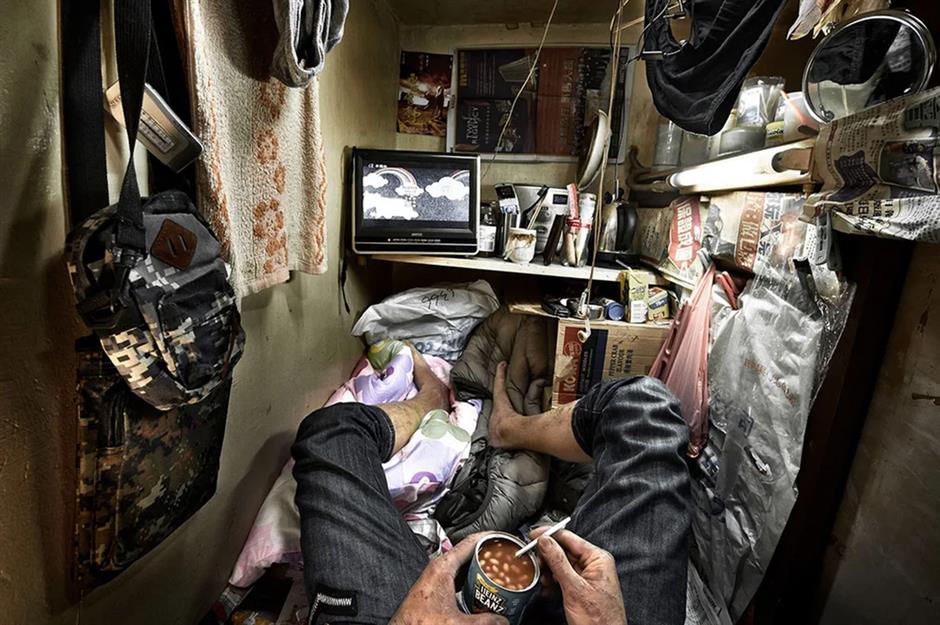
Hong Kong is among the world’s most prosperous cities, but it’s also a tiny coastal area struggling to cope with its enormous population.
Housing 7.5 million residents in an area of 427 square miles (1,108sqkm) is a challenge that requires inventive solutions, from luxury micro-apartments built into old drainpipes to the tiny coffin and cage homes of the city’s poorest. Yet, it remains the most unaffordable place to live in the world.
Click or scroll on and discover the ingenious – and desperate – housing solutions in this overcrowded city...
The most expensive city in the world
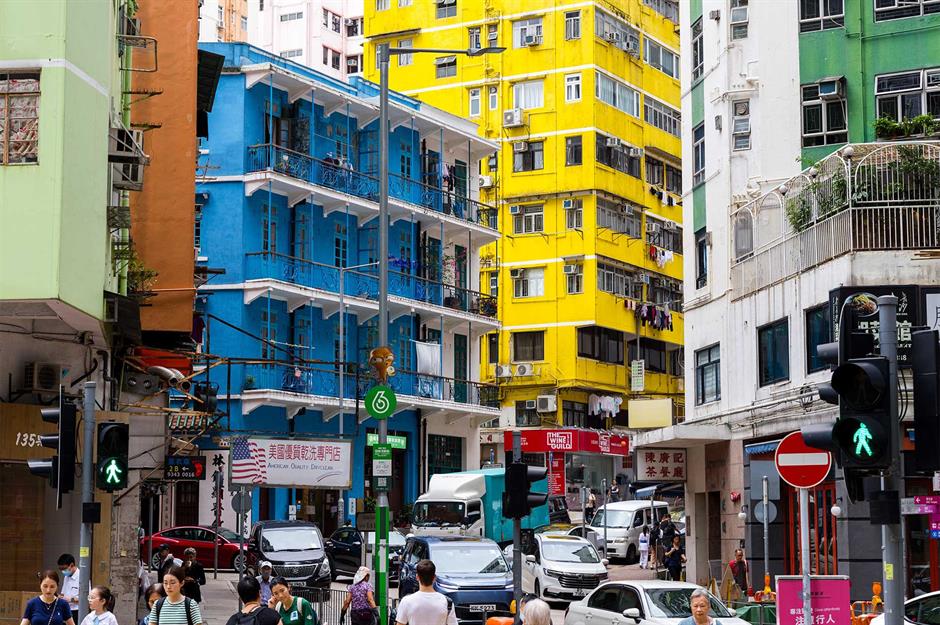
In the third quarter of 2024, the average home price in Hong Kong was HK$13,755 (US$1.8k/£1.4k) per square foot – that's HK$147,183 ($18.9k/£14.7k) per square metre, according to Hong Kong's Rating and Valuation Department.
Incredibly, that figure has reduced in recent years, largely due to Hong Kong's chronic housing shortage and a dip in demand due to its unaffordability. Hong Kong is consistently named one of the least affordable housing markets in the world, and has one of the lowest rates of home ownership at 51%.
Hong Kong’s property market is sky-high
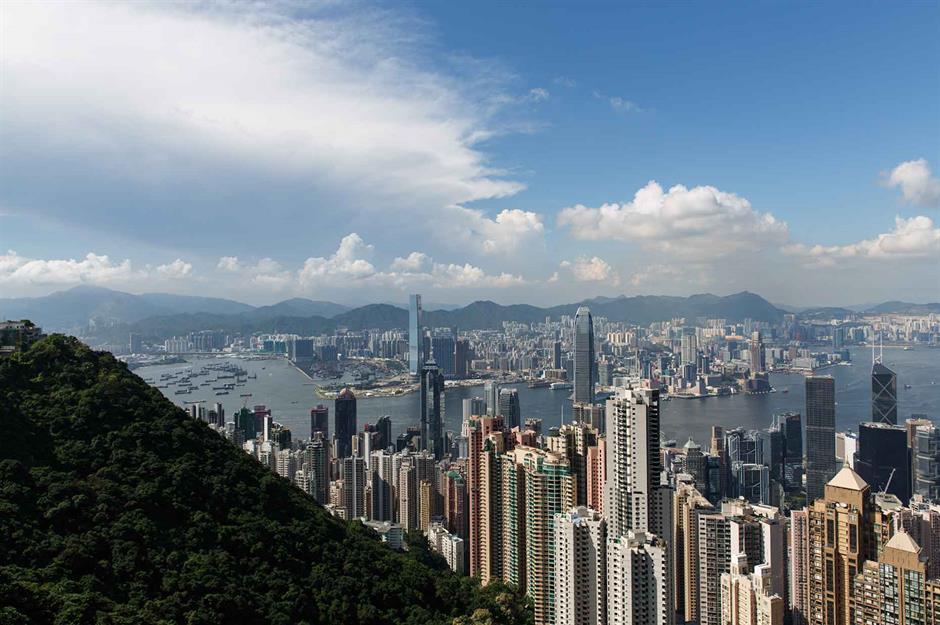
Despite the shortfall, there are still ultra-luxury homes available for the super-rich at the higher end of the market. However, because of the sheer number of people living in Hong Kong, even small apartments are unaffordable for ordinary people and the bigger the apartment, the higher the price per square foot.
According to the real estate data company Global Property Guide, average home prices were 16.7 times the gross annual median household income as of 2023. Incredibly, that's the lowest level since 2016.
An eye-watering view

One of the most sought-after – and thus pricey – locations is The Peak. The highest point on Hong Kong Island, it enjoys cooling maritime breezes and city views. But for the privilege of soaking up the view, you can expect to spend several times the amount you would on property in London.
A spacious five-bedroom apartment with a garden in this neighbourhood can reach HK$680 million (US$87.5m/£67.6m).
Hong Kong's record-breaking prices
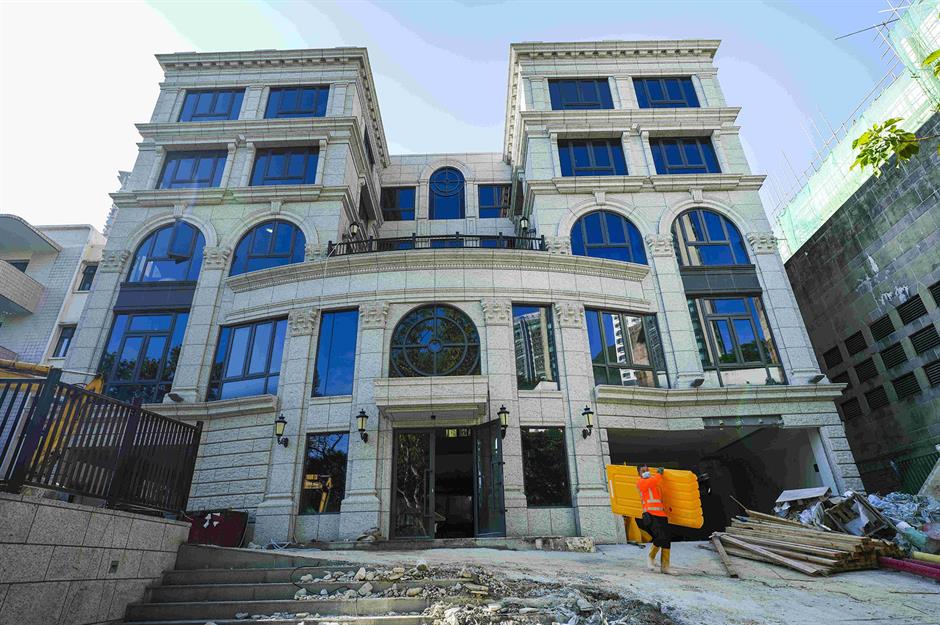
A five-storey townhouse in Repulse Bay is the most expensive home in Hong Kong – and one of the most expensive in the world – as of March 2025. The 11-bedroom mansion, pictured here during its construction, was listed in 2023 for a staggering HK$2.2 billion ($283m/£219m).
Covering 14,923 saleable square feet (1,386sqm) it'll cost its new owner HK$147,423 ($18.9k/£14.6k) per square foot or HK$1.6 million ($206k/£159k) per square metre!
Little luxuries

Luxury properties are always available for those who can pay, but there's an increased demand for luxury on a smaller scale in Hong Kong.
This narrow flat is in a new property development in the Kowloon district of Hong Kong. The cramped financial hub regularly tops the list of the least affordable housing in the world.
Design solutions
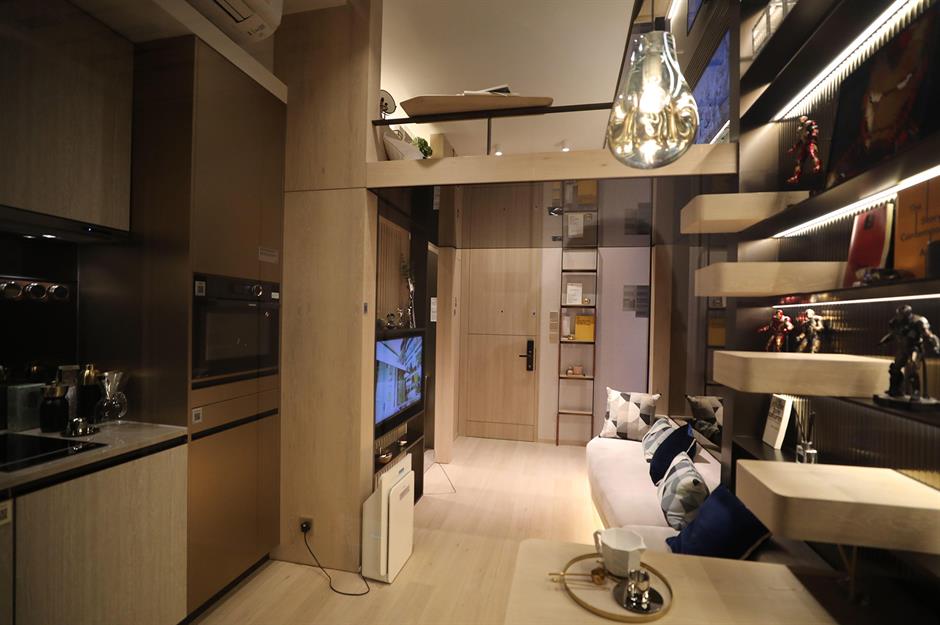
A lack of space will always be an issue in Hong Kong, but that doesn't mean a shoebox home can't feel luxurious.
Property developers are turning to designers to help make these tiny homes more palatable and upmarket for their well-off clientele. This micro apartment uses every design trick in the book to make the snug space feel indulgent.
Upmarket nano flats can set buyers back up to HK$6.1 million ($785k/£606k).
Packing in the young professionals
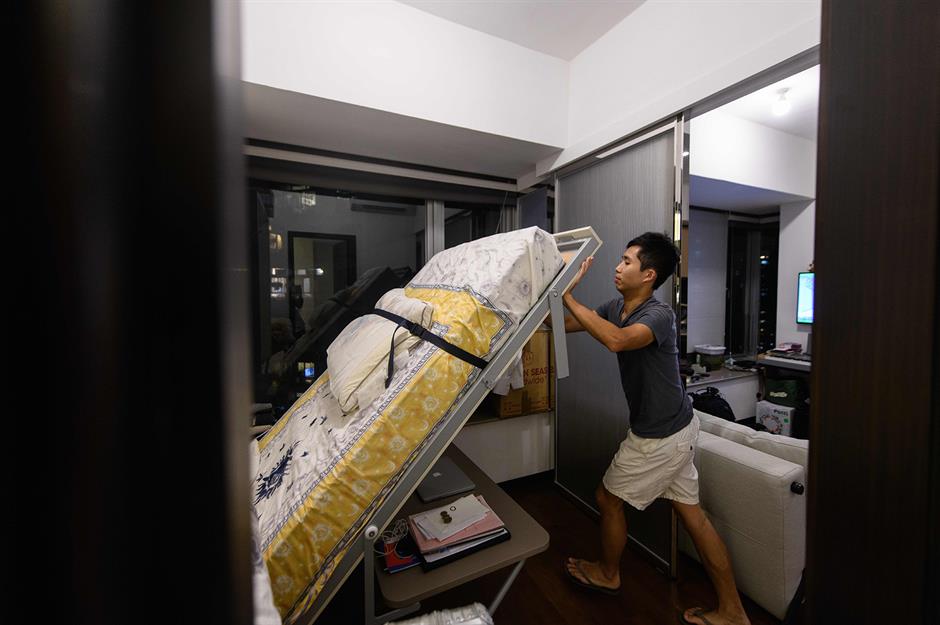
Pictured in 2018, finance worker Adrian Law puts away the wall bed in his studio apartment in a new development in the gentrified Sai Ying Pun neighbourhood of Hong Kong.
He paid around HK$6 million ($772k/£596k) for the tiny home in 2016, which would be around HK$7.1 million ($913k/£707k) today.
Nano-flats are the norm, not the exception
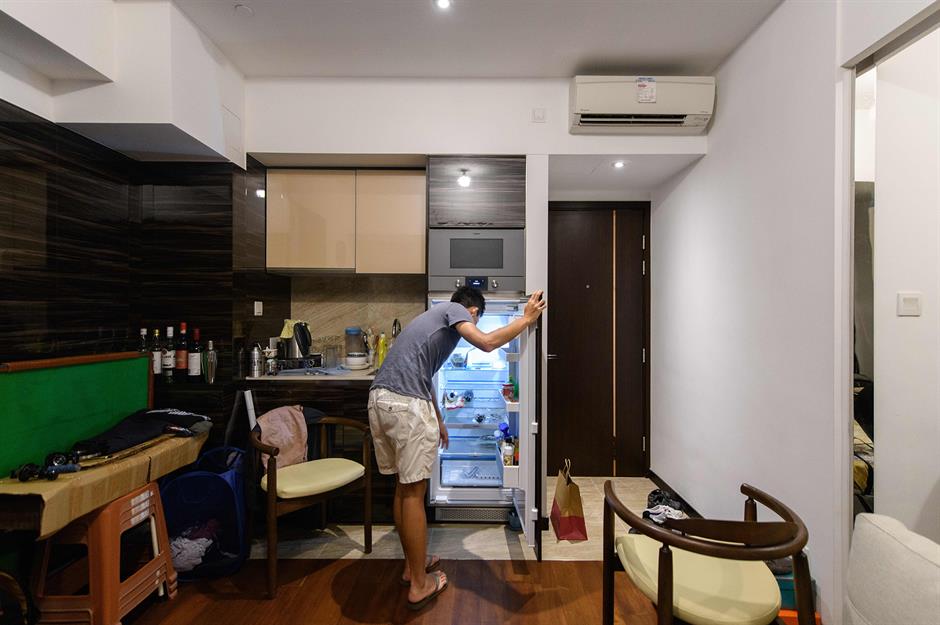
Adrian's living situation is far from unusual.
As house prices spiral in Hong Kong, young professionals across the city reside in ever-shrinking spaces, with box-like 'nano-flats' and co-shares touted as fashionable solutions to the affordable housing crisis.
Living on top of each other
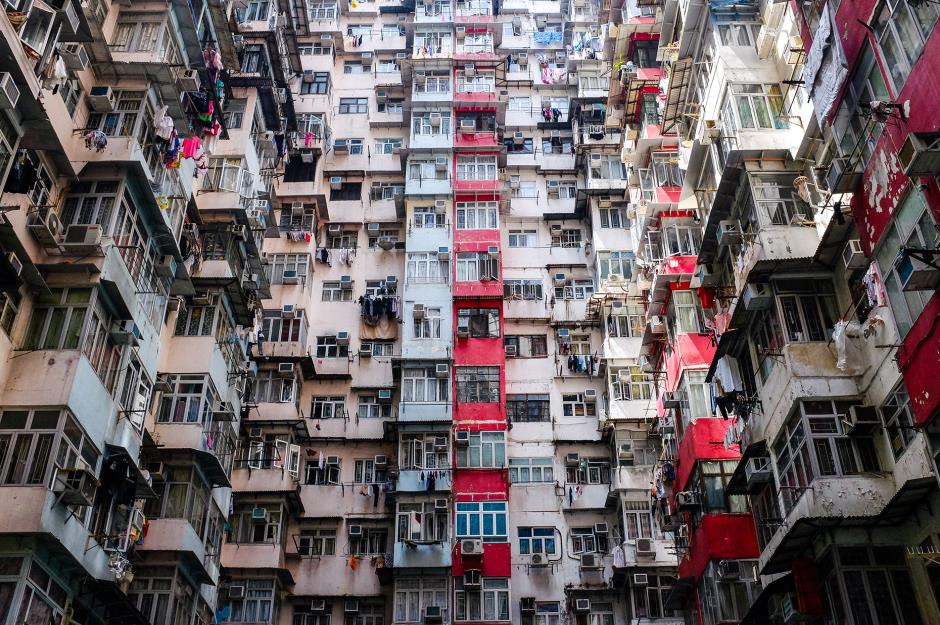
High-rise homes are the most common form of accommodation for the average resident, but they can be cramped and overcrowded, and landlords are known to take advantage of the high demand.
Even regular apartments are generally very small, particularly in the popular central areas. Residents are used to close quarters and small spaces, so they're open to new housing solutions. However, some alternative living arrangements have made headlines for their shocking and cramped conditions.
Hong Kong’s tiny ‘coffin’ apartments
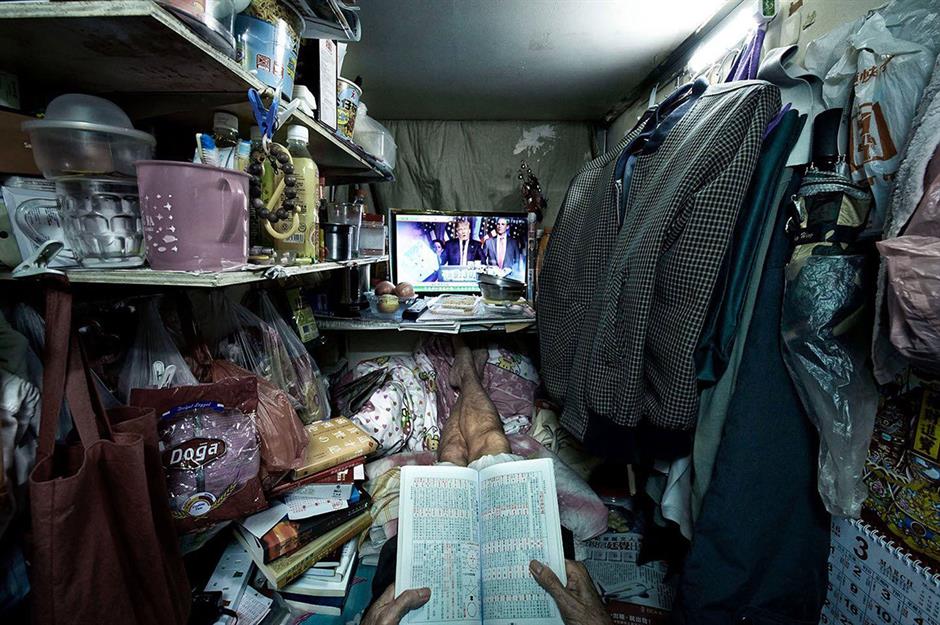
In the past few years, shocking pictures have emerged from Hong Kong documenting residents living in what has been dubbed "coffin" homes – subdivided apartments with very little room to move, let alone live.
It’s estimated that around 220,000 people – including 40,000 children – live in squeezed conditions like this in Hong Kong.
No space to move
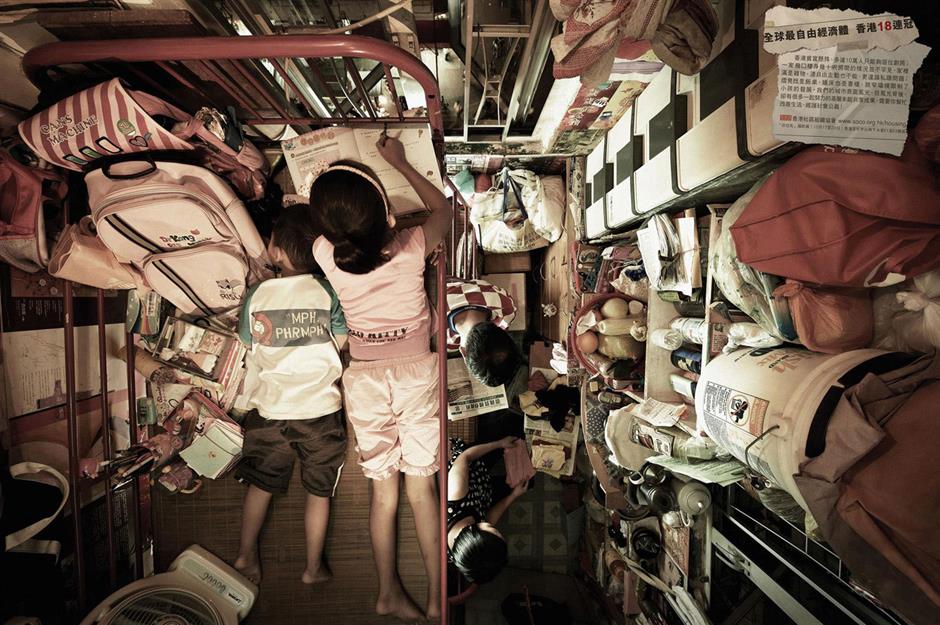
The "apartments" are usually made from bigger units that have been divided into such small areas that those living in them often can’t stretch out their legs fully.
The median rent for one of these claustrophobic cubicles is HK$5,000 ($643/£498) a month, according to AP News.
Documenting conditions

The Society for Community Organization (SoCO) is an NGO that promotes civil rights and equality in Hong Kong. It worked with photographer Benny Lam on a project entitled 'Trapped', highlighting the region's poor and forgotten as they struggle to survive these inhumane conditions, despite Hong Kong's enormous wealth.
From 2012 to 2015, Lam captured shocking images of living conditions in the city, including in the infamous coffin homes.
Subdividing bigger apartments
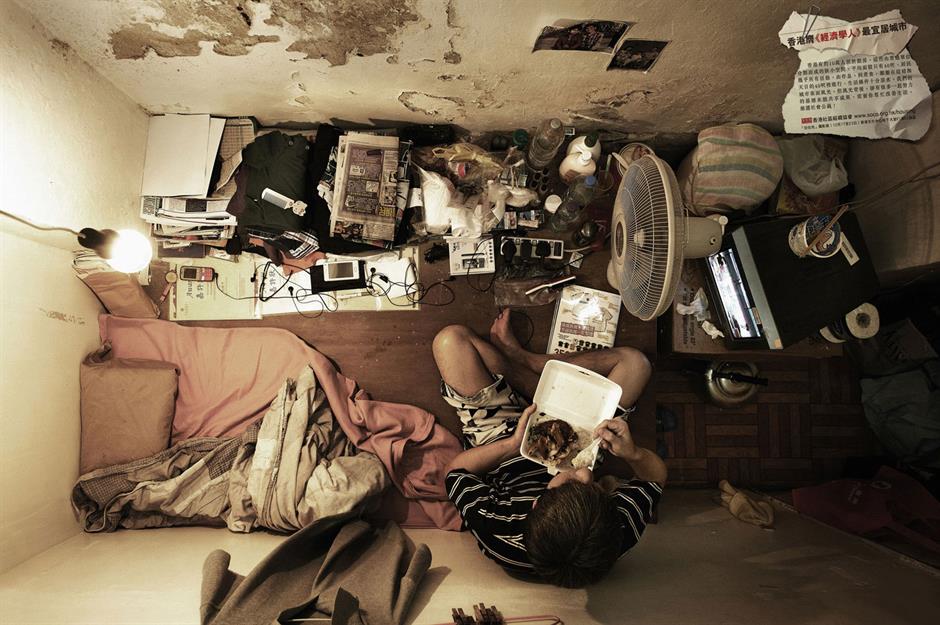
A 400-square-foot (37sqm) flat can be illegally subdivided to accommodate nearly 20 sealed bunk bed spaces, each one measuring just six by 2.5 feet (1.8m x 0.8m), according to Vice. They're sometimes partitioned with wood, metal sheets or even wire.
Kitchen and toilet units are usually of a similar size and shared by the inhabitants of several cubicles.
Smaller than a parking space
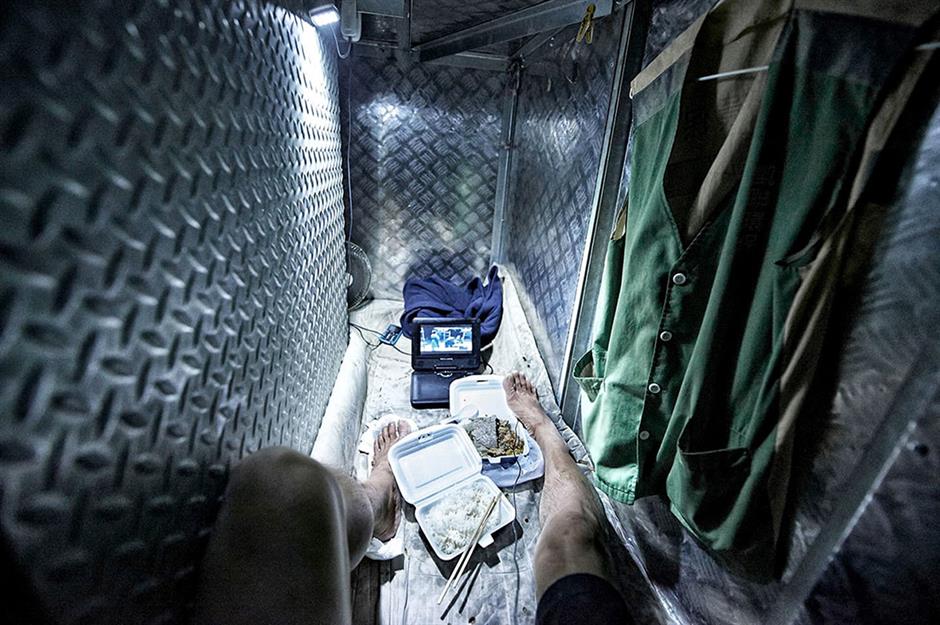
The median size of these dwellings is just 110 square feet (10sqm), and about a quarter are less than 86 square feet (8sqm). They are often too small to stand up in.
The standard size of a parking space in Hong Kong is 135 square feet (12.4sqm), while the average prison cell measures 75 square feet (7sqm), throwing these grim living conditions into sharp relief.
Lockdown nightmare
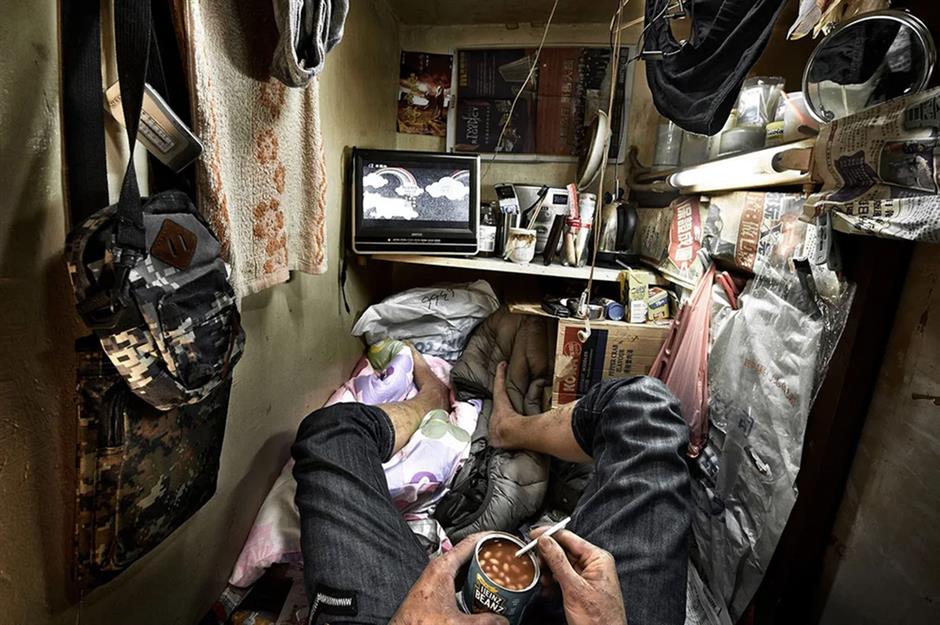
Around 110,000 tiny dwellings have been created by subdividing apartments.
Throughout the coronavirus pandemic, during which densely populated Hong Kong reported over 1.8 million cases of Covid-19 and 10,273 deaths up to October 2022, residents were confined to these tiny, claustrophobic spaces.
New government rules
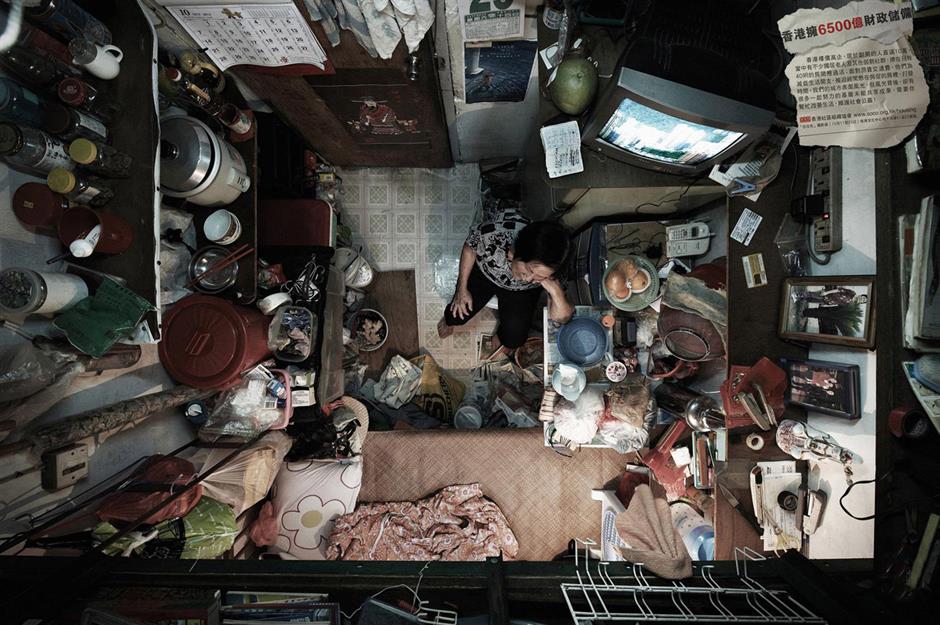
These squalid and sometimes dangerous conditions make it difficult to understand why the Hong Kong government isn't doing more to tackle the housing crisis.
In December 2024, the government proposed new rules setting minimum standards for subdivided units and plans to eliminate them by 2049. While some small measures have been taken to increase social housing and control rents, many worry the plan will push up rents and make life impossible for poorer people.
Hong Kong's cage homes

Hong Kong's property prices have risen to such an extreme that the city's poorest residents are even sleeping in tiny wire cages.
The rampant increase in new luxury development has led to a shrinking supply of older, cheaper blocks, so even these desperately meagre lodgings may soon disappear.
This photo from 2013 shows 77-year-old Yeung Ying Biu sitting partially inside the cage he calls home, measuring 16 square feet (1.5sqm).
Forced removal
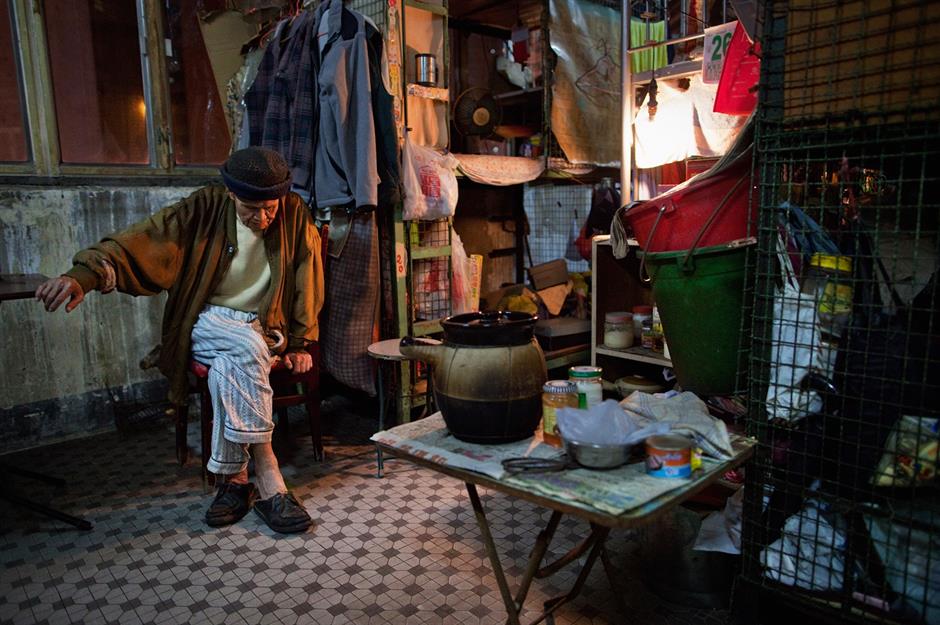
In this picture from 2010, an elderly resident sits beside his cage as he prepares to settle in for the evening on the apartment floor he shares with four others.
Thousands of people living in 15-square-foot (1.4sqm) cubicles or cages were forced to vacate premises, as lots were steadily sold off to developers and low-cost accommodation became more difficult to find.
Basic shared facilities

Bathrooms regularly double up as kitchens in the subdivided spaces, and the potential for disease to spread is staggering.
Conditions like these take a mental and physical toll. Tenants report feeling ashamed and depressed by their dismal conditions, in which rats and cockroaches are the norm, according to an exposé by the South China Morning Post in 2022.
No alternative
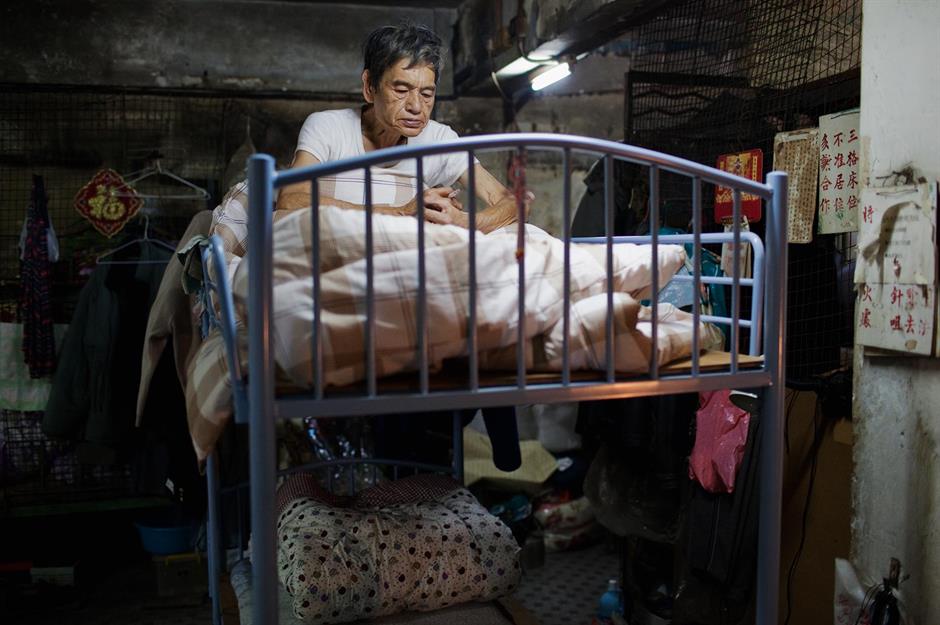
Here, another resident rests on his bunk bed, which was donated by the Society for Community Organization.
These squalid, cramped conditions are the only option for many. The average waiting time for Public Rental Housing in Hong Kong is 5.3 years, as of December 2024. While that's certainly a long wait, it has fallen from a peak of 6.1 years in March 2022.
Extreme slums
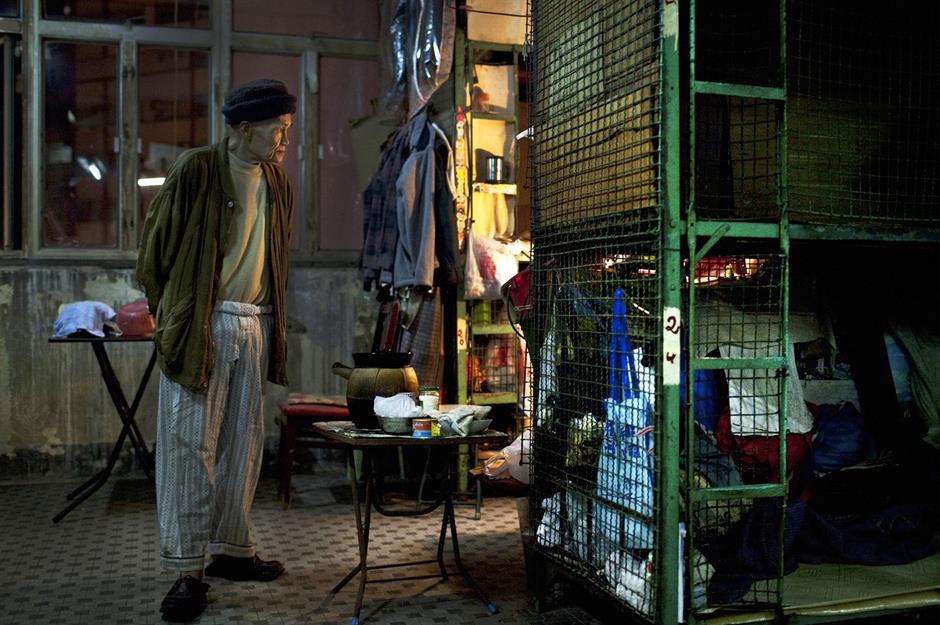
These urban slums are at the most extreme end of the housing crisis in Hong Kong – a far cry from the incredible levels of luxury enjoyed by the wealthy.
Children growing up in subdivided flats are more likely to experience food insecurity and nutritional deficiencies, according to a 2023 study. Confined living can also reportedly cause or exacerbate shortsightedness, developmental issues and spinal problems.
Hong Kong's middle class
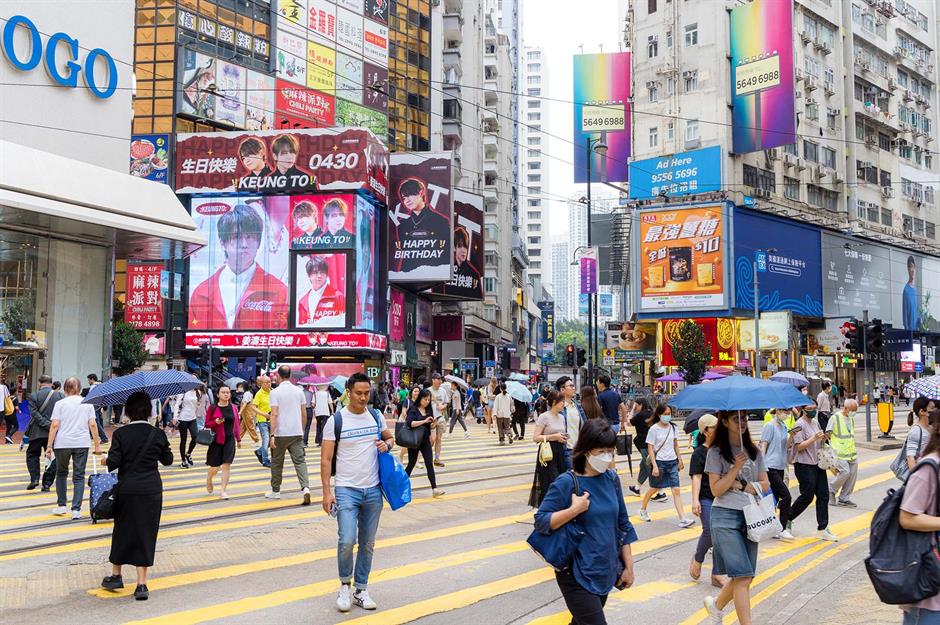
The housing crisis has become so serious that students, travellers, entrepreneurs and young business people are opting to co-live to afford to stay in the city.
Co-living is now becoming standard practice, with finance workers and students alike signing up for new developments in the city, usually sharing with three to four other people.
Co-living quarters
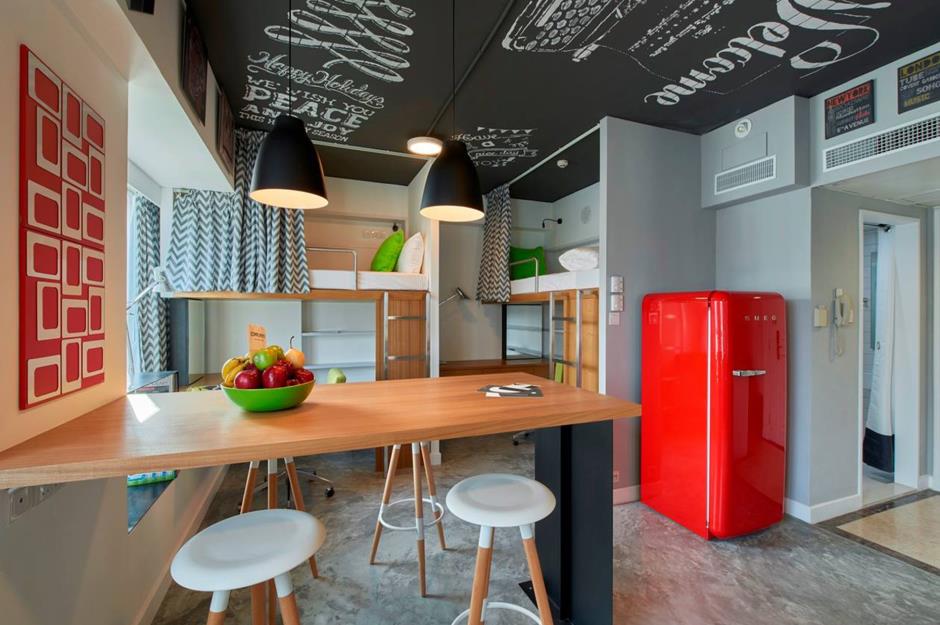
Campus is a tastefully decorated modern co-living space in Tsuen Wan. Space-saving rooms can be shared by four people, with bunk beds dividing the main room into individual areas.
All sleeping spaces are equipped with lockable drawers, storage shelves and a hanging rail, as well as reading lights, a study desk and a chair. Curtains can be drawn across the bunks for privacy.
Desirable extras
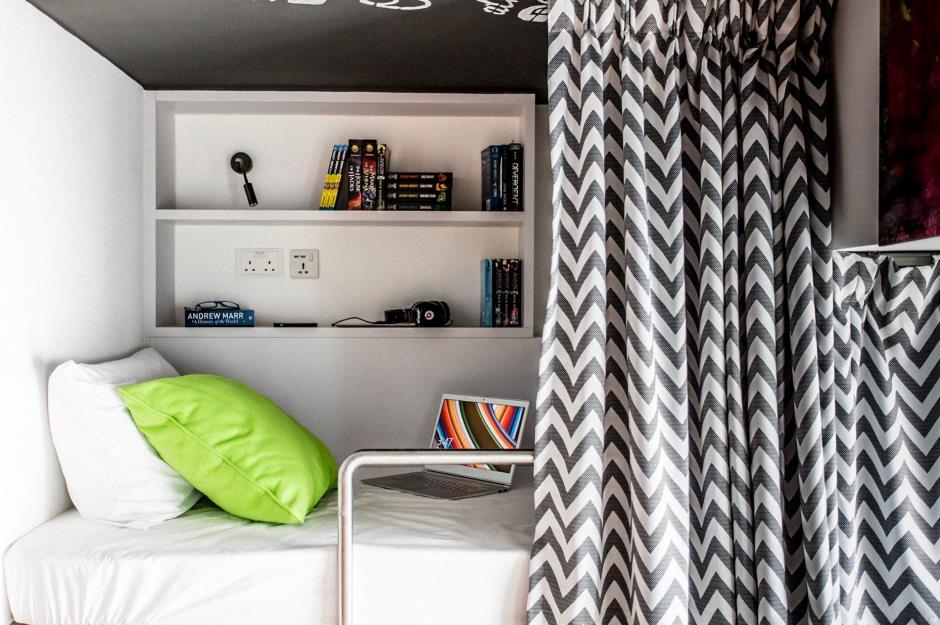
This shared residence is designed with long-term living in mind and is a popular choice with students. It has access to a swimming pool and fitness suite, while a shuttle bus allows easy access to Hong Kong's most popular locations.
To build a sense of community, life at Campus revolves around socialising and the management regularly organises group activities such as movie nights and boat trips.
This also appeals to international travellers who sometimes stay in the co-living space for a more authentic experience of Hong Kong life.
Inventive solutions to the housing issue
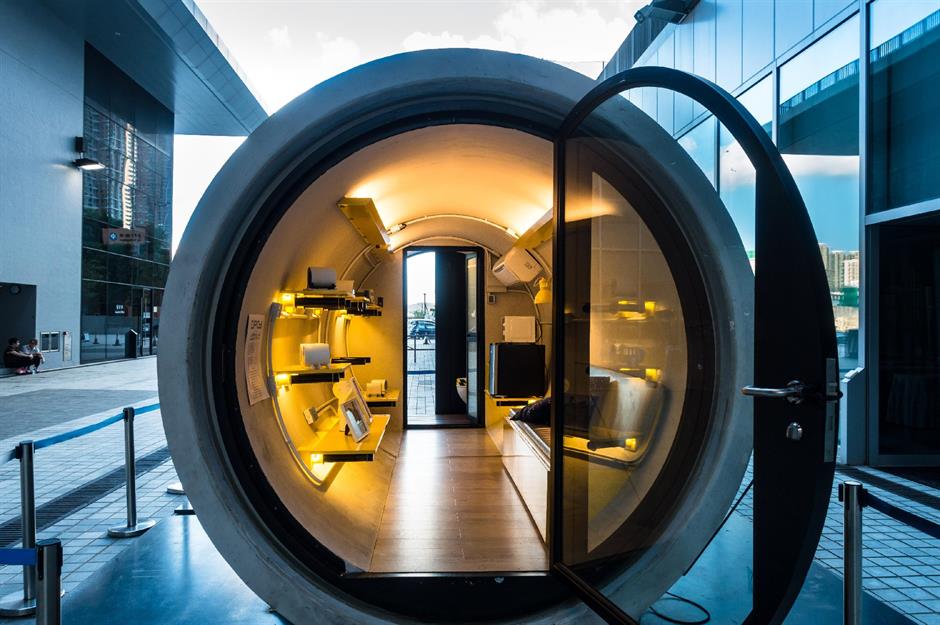
The need to find or create affordable living spaces in such an oversubscribed market has led to some truly inventive solutions. The OPod Tube House is an example of micro-housing that uses discarded materials, like the city's old drainage.
The brainchild of Hong Kong architect James Law, the tube houses are constructed within disused concrete water pipes, offering young local residents low-cost starter homes. Each Tube House unit boasts a bed, a mini-fridge, storage space and a bathroom compartment within its cosy 100 square feet (9.3sqm) of living space.
OPod Tube Houses
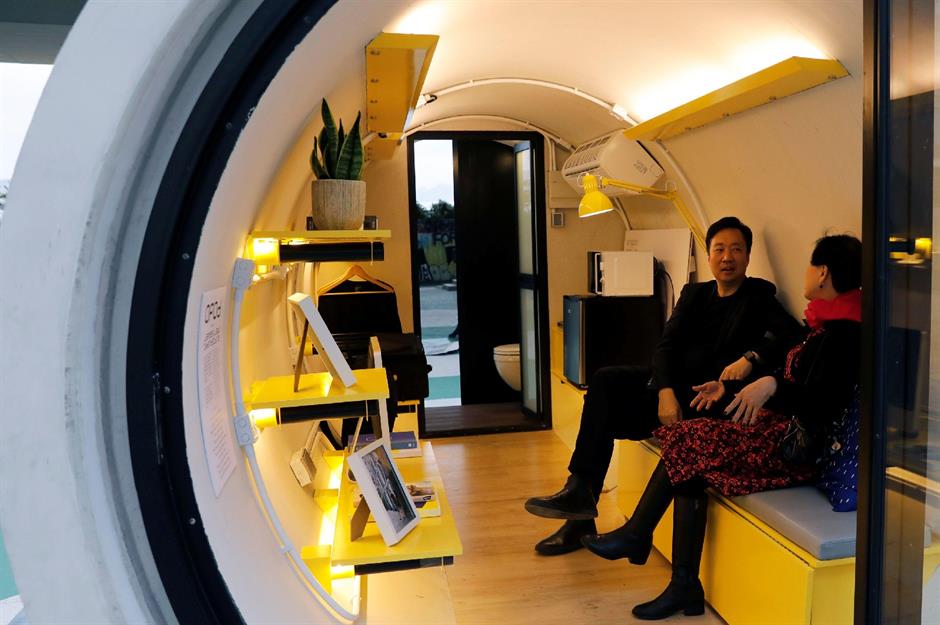
Law estimates it would cost around HK$3,000 (US$386/£298) a month to rent a Tube House, but it would be rent with a difference.
"About HK$1,000 (US$129/£100) of that would be the management costs," he told UK newspaper The Guardian in 2018. "The remaining two thousand would be saved on behalf of the young people. It will be invested with interest, and at the end of the tenancy we will return the money to them to help them embark on the next stage of their lives.”
Ingenious 'wandering' home
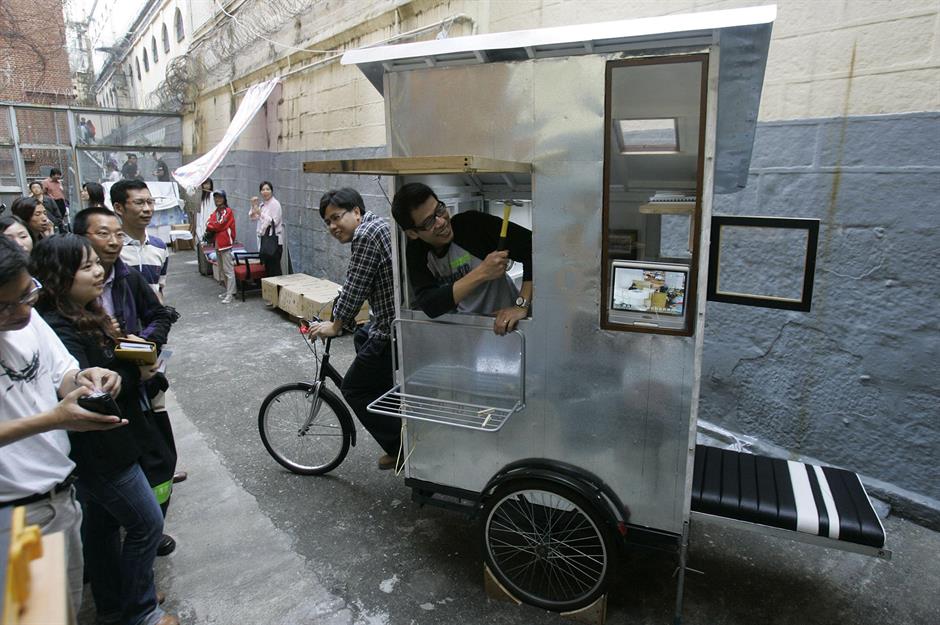
Designer and visual artist Kacey Wong created this intriguing 'wandering' home as a way to question typical ways of living in Hong Kong.
Perched on top of a type of tricycle regularly seen on the streets of Mainland China, the three-foot by four-foot (0.9m x 1.2m) home was originally built by Wong for himself, but he later realised it could potentially offer a solution for Hong Kong's homeless population.
Challenging concepts
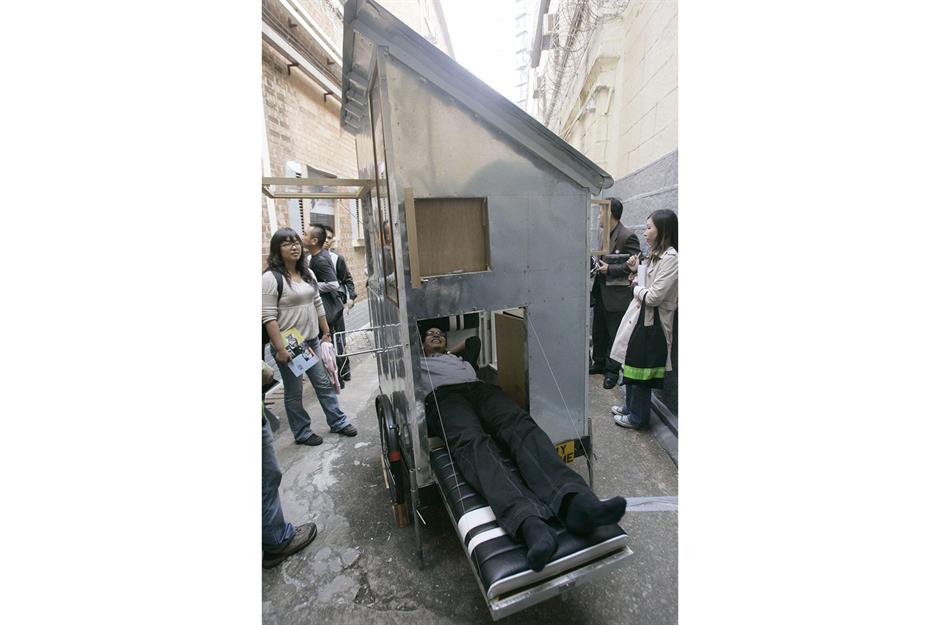
"This project explores the idea of minimal dwelling and offers an alternative solution which intrigues us to rethink our living conditions in the city," Wong explains on his website.
He has created numerous other home and travel designs, including 'Paddling Home', which is a comment on mobility and compact living. The four-foot by four-foot (1.2m x 1.2m) house floats on the sea atop barrels and tyres. The floating tiny home includes bay windows, an air conditioning unit and a stainless steel gate and was inspired by Hong Kong's housing crisis.
Building an island to house a million people

Such a large-scale problem requires a large-scale solution, and the Hong Kong government hopes an ambitious project known as the Lantau Tomorrow Vision will be just that. The project aims to create 4,200 acres (1,700ha) of artificial islands east of Lantau Island, pictured here.
When the project – also known as the Kau Yi Chau Artificial Islands – was first announced in 2018, between 260,000 and 400,000 homes were planned to house up to 1.1 million people. Work was scheduled to begin in 2025, however, it is now facing delays of around two to three years, according to finance chief Paul Chan Mo-po.
A large-scale solution?
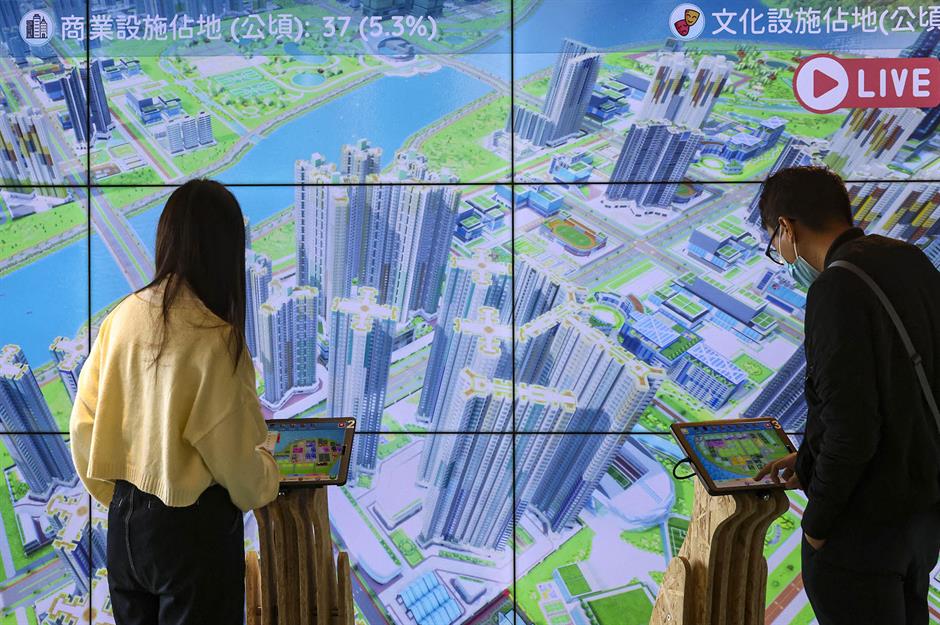
This interactive display outlining the project was put on by the Civil Engineering and Development Department in February 2023.
Estimated to cost around HK$624 billion (US$80bn/£62bn), the grand scheme has been labelled a "white elephant" and has drawn criticism from environmentalists. Only time will tell if it's brought to life – and if it eases Hong Kong's escalating housing crisis...
Loved this? Now discover more unusual homes around the world
Comments
Be the first to comment
Do you want to comment on this article? You need to be signed in for this feature